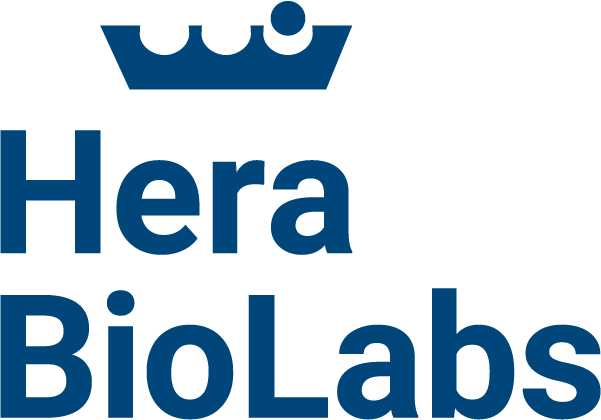
Combining experience and advanced gene editing tools
Our cutting-edge technology enables reliable engineering of new preclinical models crafted to our partners’ exact specifications and a seamless transition to in-vivo model validation and drug efficacy studies at our accredited Lexington, KY facility.
Hera has been engineering rat and mouse models for over 15 years. Since then, we’ve developed a diverse toolbox of technologies, including piggyBac™ and Cas-CLOVER, and professional expertise to meet the unique needs of each client. From knockout rat models to conditional mouse models, our milestone-based approach to gene editing simplifies complex processes to mitigate risks from the onset.
Hera’s Focus on Rat Models
While mice play a large part in our rodent model engineering operations, our main focus is on rats. There are three main reasons for this:
- Rat physiology is more similar to human physiology and is easier to study than in mice.
- The rat is more intelligent than the mouse and is better suited for behavioral research.
- The size of the rat allows for surgical procedures and has proportionally sized organs for drug studies.
Our SRG Rat is the perfect example of why researchers are choosing rats over mouse models. We created the SRG rat as an immunodeficient xenograft platform that provides many advantages to oncology researchers.

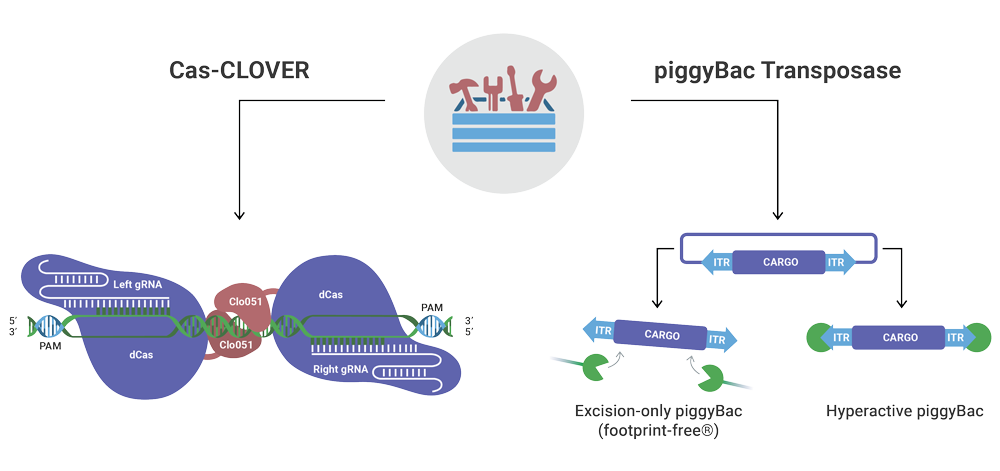
Our Gene Editing Tool Box
Cas-CLOVER has demonstrated extremely high targeting efficiency in rodent embryos, while piggyBac transposase delivers stable transgenesis of enormous pieces of DNA, multiple genes, and full BACs.
Whether it is a mouse, rat, knockout, large deletion, knock-in or base-pair edit, we will consult with your team and deliver optimal technologies and animal model strains. Our technologies are free and clear of IP entanglements, enabling your research or commercial needs with the full freedom to operate.
Read more about our technologies.
Cas-CLOVER for Knockout Rat Creation
Cas-CLOVER demonstrates high on-target gene targeting for creating knockout & knock-in rat and mouse models. One recently study, rat embryos were electroporated with Cas-CLOVER gRNAs. Of the pups born, 16 of 26 showed one or more INDEL at target site in the gene of interest. The INDELs ranged from 3 to 744 bp in size.
Cas-CLOVER as a nuclease for transgenic rodent creation produces larger INDELs, which ensures the knockout phenotype. Cas-CLOVER also shows higher rates of homologous recombination leading to successful creation of knock-in (KI) or safe-harbor targeting in rat and mouse embryos.
Because Cas-CLOVER is an obligate dimer and uses a double gRNA approach, it can be designed to be extremely specific demonstrates low to no off-target mutagenesis when compared to CRISPR/Cas9.
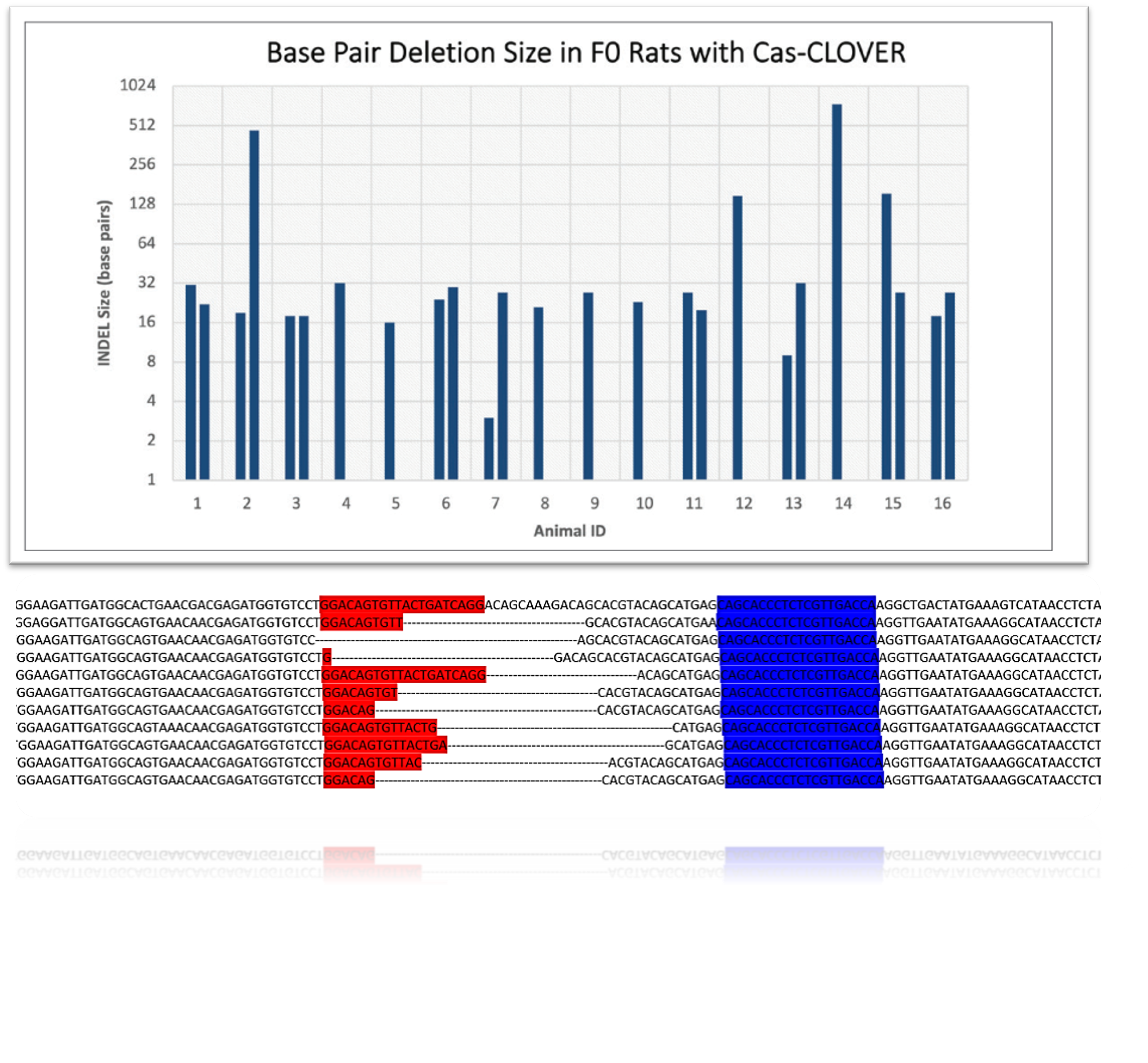
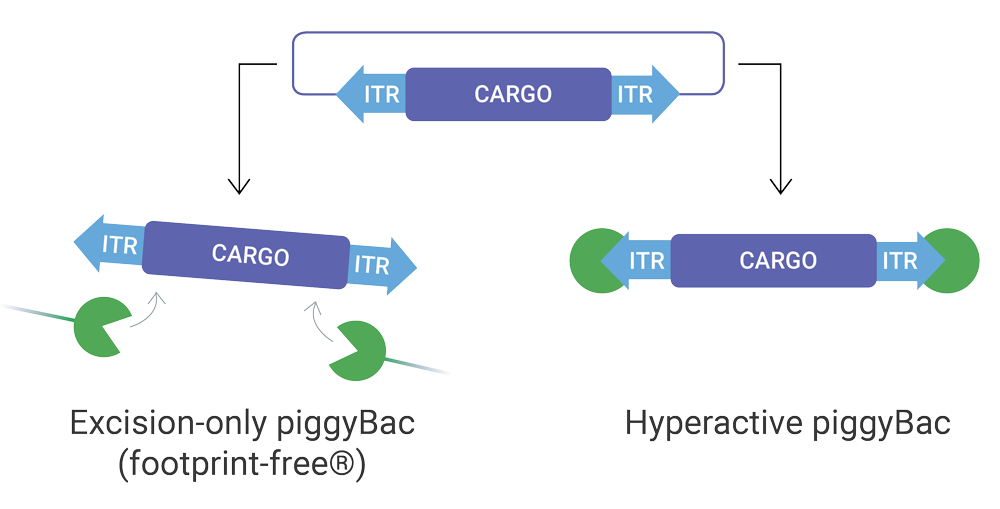
piggyBac Delivers 225kb BAC To Produce Humanized SIRPA Transgenic Rats
Published in Nature Scientific Reports and summarized here, a European research team describes their experience comparing piggyBac with other contemporary gene editing technologies like CRISPR/Cas9 and TALEN technologies:
“Our findings show that piggyBac transposition is a more efficient approach than the classical BAC transgenesis, resulting in complete BAC integration with predictable end sequences, thereby permitting precise assessment of the integration site. Neither CRISPR/Cas9 nor TALEN increased BAC transgenesis.”
A Full-Service CRO Saves Time and Resources
From model conception to final data report, let Hera handle the hands-on model creation, validation, and screening stages. Having a single CRO make the most of each animal produced (breeding, phenotyping, or efficacy testing) reduces the timeline to getting your answers.
Every move from one CRO to another adds time, expense and risk to each stage of the model development process. Work with the same project team from beginning to end at Hera.
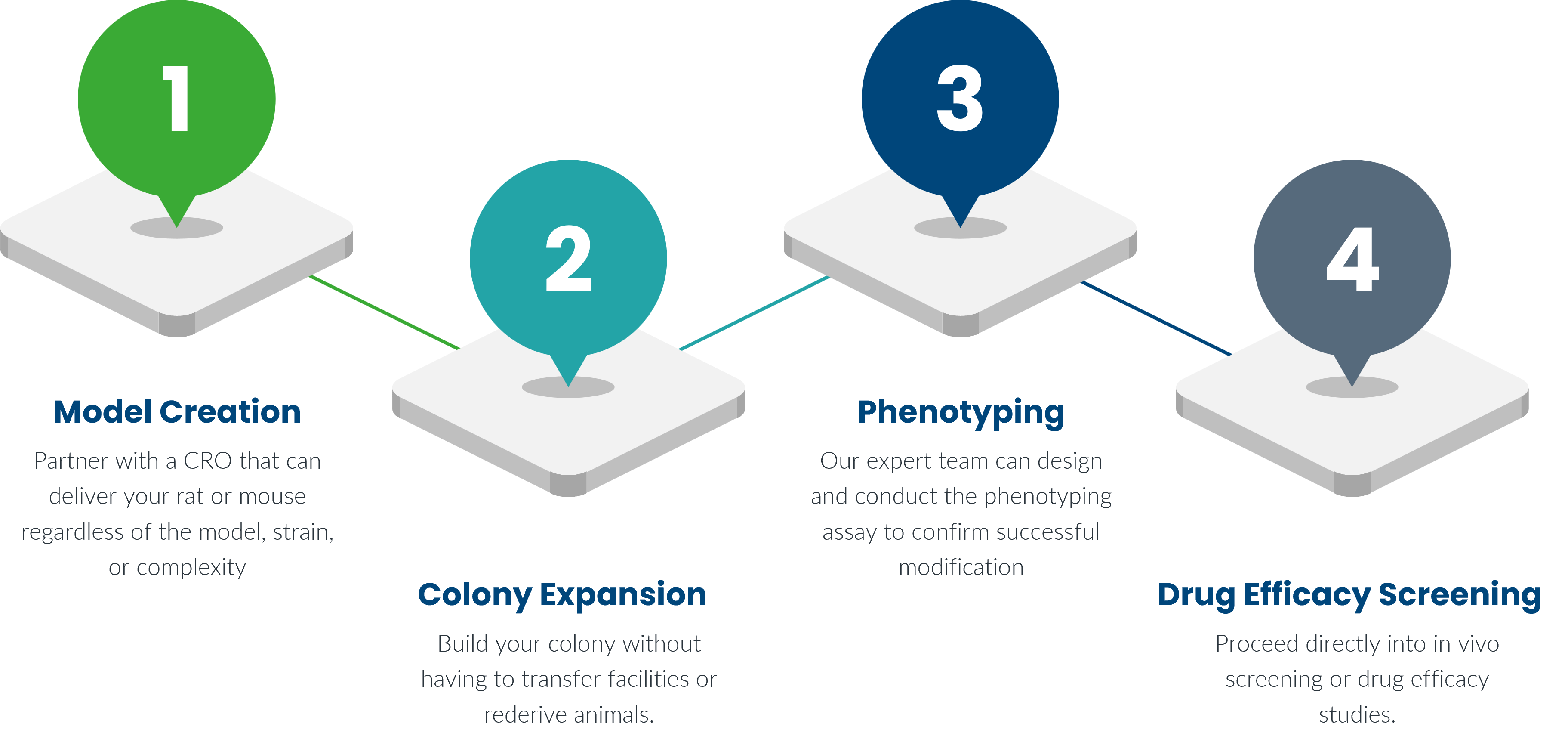
Accredited Facility Leveraged By Our Talented Team
Our U.S. based facility is backed by many key certifications.
We are dedicated to ensuring the integrity and quality of our science. With this intent, we earned an OLAW-approved Animal Welfare Assurance from the NIH Public Health Service (PHS) Policy on Humane Care and Use of Laboratory Animals (PHS Assurance).
We also received accreditation with the Association for Assessment and Accreditation of Laboratory Animal Care (AAALAC).
To further facilitate comprehensive scientific teams, we hold memberships and training programs with the NIH (National Institute of Health), the University of Kentucky’s Division of Laboratory Animal Resources (DLAR), and the American Association of Laboratory Animal Science (AALAS).
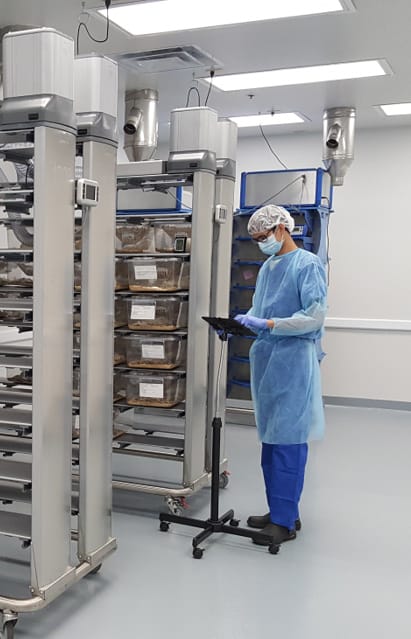
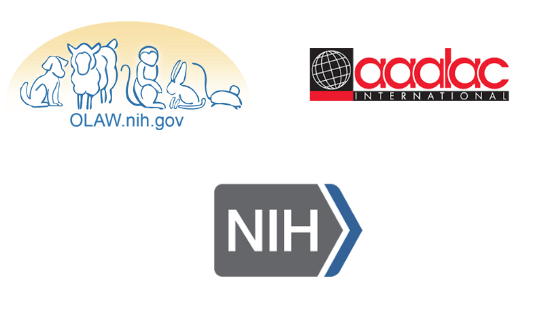
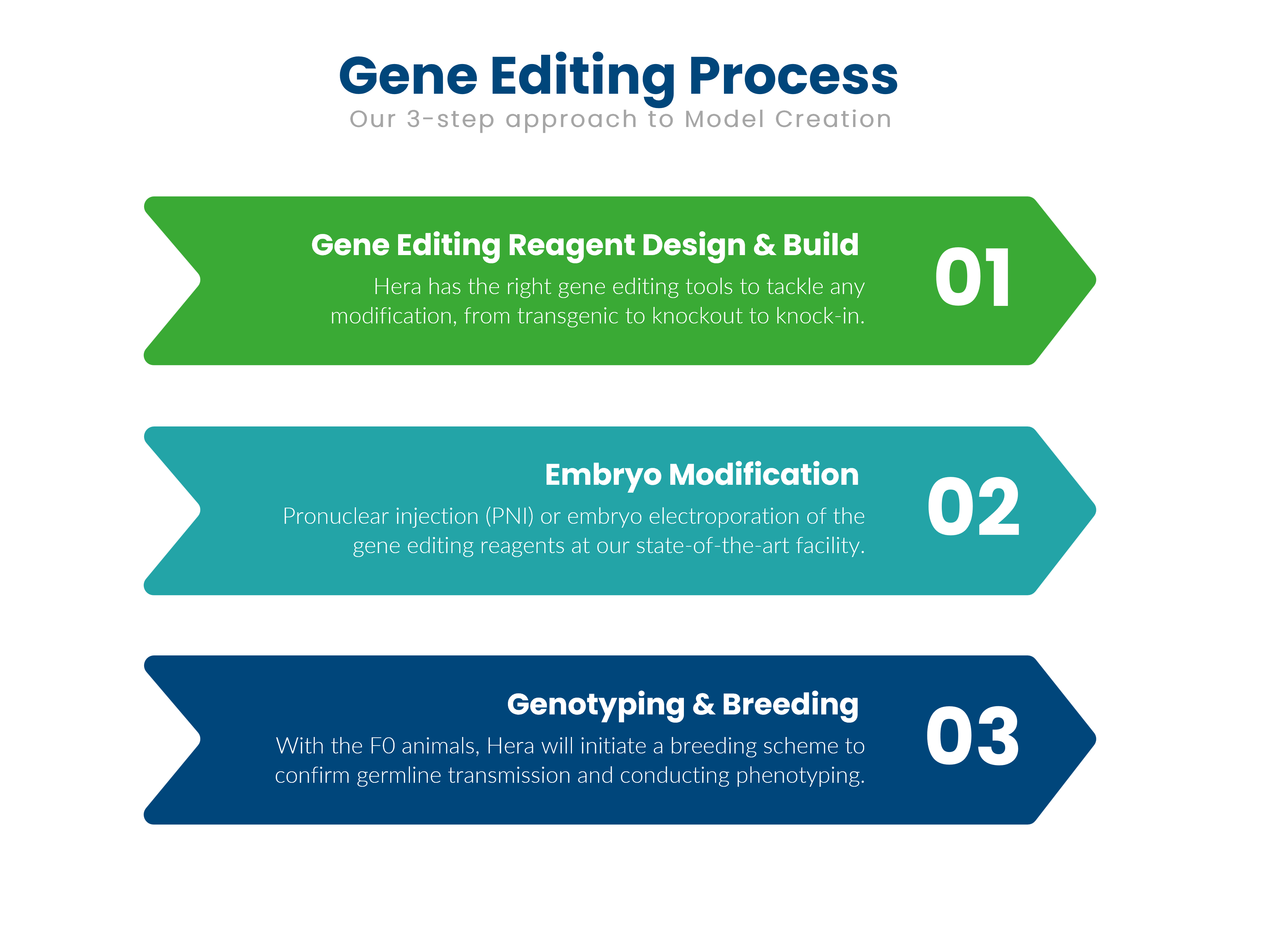
Our Process
The first step of our rat model and model creation process is determining the mutations required (knockout, knock in, transgenic, or conditional) and the species and strain such as the C57BL/6 mouse or the Sprague Dawley rats. This will determine the gene editing approach including which nuclease or gene editing technology to use, using embryo or embryonic stem cells, and electroporation or PNI.
For each client project we diligently design a genotyping assay and a phenotyping approach. The F0 pups’ alleles will be screened for heterozygous or homozygous INDEL mutations at the target exon or loci in the genome. The phenotype will be assessed by confirming the presence or absence of gene express by evaluating mRNA expression followed by protein analysis.
What Can Our Services Do For You? Watch Our Video
Learn about the mutations in our double knockout SRG OncoRat leading to the first commercially
available fully immunocompromised rat model.
Related Resources
Find related and up-to-date information and literature for our Animal Model Creation
service including blogs, posters, presentations, webinars, and white papers.
-
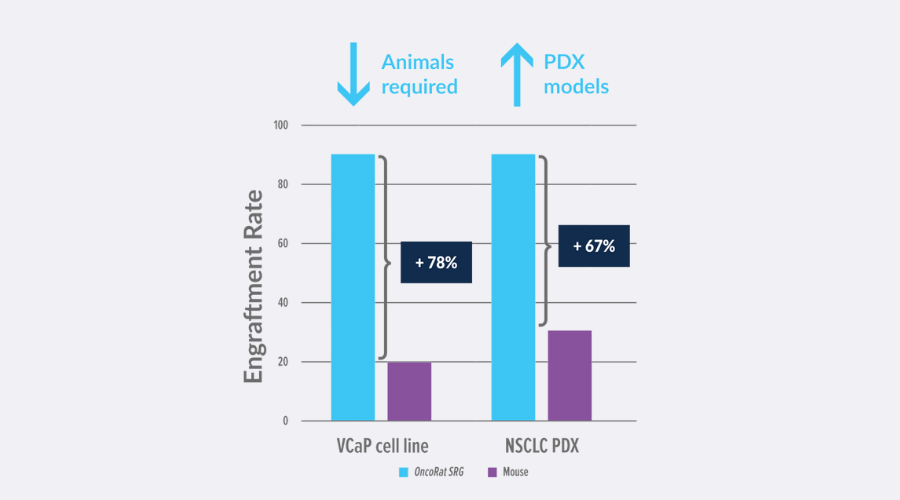 Evolution Of The Rat Model
-
Rats have been favored for drug development studies because the […] Read More →
Evolution Of The Rat Model
-
Rats have been favored for drug development studies because the […] Read More →
